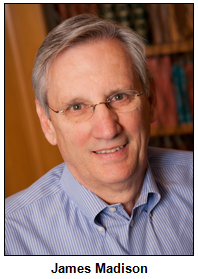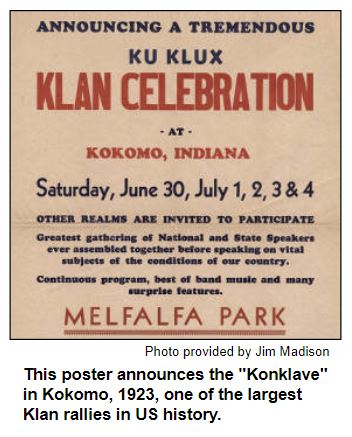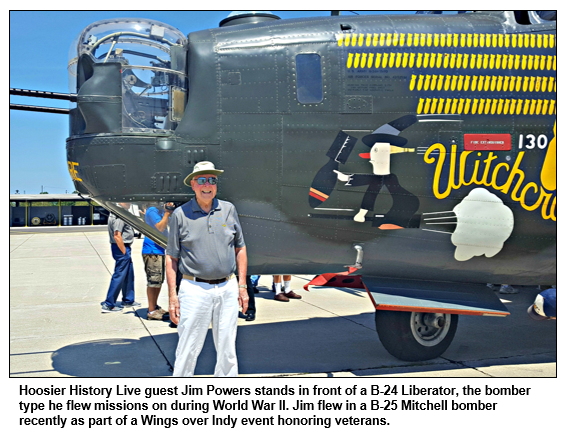
Saturdays, noon to 1 p.m. ET on WICR 88.7 FM.
Or stream audio live from anywhere on WICR Online!
You can listen to recent shows by clicking the podcast links below, or check out our extensive archive of past shows available as podcasts.
September 19, 2020
Hoosier History Live will be pre-empted on September 19 for WICR-FM's broadcast of Rosh Hashanah services.
Catch up on Hoosier History Live with these podcasts!
There will be no live show this Saturday, but that doesn't mean you have to go without hearing your favorite live call-in history show! Straight from our podcast archive, any of these shows should fill that Hoosier History Live-shaped hole in your heart!
The first deals with a topic we'll be hearing a lot about over the next month or two: presidential politics. And in these days of especially vitriolic campaign rhetoric, it's helpful to take a look back at past elections and contemplate the lessons they have to teach.
Eugene V. Debs: Hoosier Socialist, five-time presidential candidate
Click here to listen to the podcast. Click here to read the newsletter for this show.
Our second suggestion is a great follow-up to last week's show on World War II era Hoosiers. In this podcast show, we focus on the experience of those "greatest generation" members who fought in the war's battles. One fascinating guest: Jim Powers, who served as a radio operator on a B-24 bomber plane that flew combat missions over Italy.
World War II vets and their insights
Click here to listen to the podcast. Click here to read the newsletter for this show.
And finally, with the Covid-19 pandemic causing a surge in the popularity of parks as places to get away from quarantining at home, we'd like to recommend this show looking into the history of Indianapolis parks. What better way to enjoy the beautiful fall weather than a stroll about your favorite park - listening to a Hoosier History Live podcast on your smartphone!
Eagle Creek Park, Broad Ripple Park and other Indy park histories
Click here to listen to the podcast. Click here to read the newsletter for this show.
Nelson Price, host and historian
Molly Head, producer/general manager, (317) 927-9101
Mick Armbruster, associate producer
Cheryl Lamb, administrative manager
Richard Sullivan, senior tech consultant
Pam Fraizer, graphic designer
Garry Chilluffo, consultant
Please tell our sponsors that you appreciate their support!

 For organizational sponsorship, which includes logos, links, and voiced credits in the show and in podcasts, email molly@hoosierhistorylive.org, or call (317) 927-9101 for information. Our podcast listens are increasing and we are being distributed on Indiana Memory and the National Digital Public Library. Grow with us as our podcast and internet presence expands! Thanks also to Visit Indy, Fraizer Designs, WICR-FM, Henri Pensis, Aaron Duvall, Kielynn Tally, Heather McIntyre, Justin Clark, and many other individuals and organizations.
For organizational sponsorship, which includes logos, links, and voiced credits in the show and in podcasts, email molly@hoosierhistorylive.org, or call (317) 927-9101 for information. Our podcast listens are increasing and we are being distributed on Indiana Memory and the National Digital Public Library. Grow with us as our podcast and internet presence expands! Thanks also to Visit Indy, Fraizer Designs, WICR-FM, Henri Pensis, Aaron Duvall, Kielynn Tally, Heather McIntyre, Justin Clark, and many other individuals and organizations.
Thank you!
We'd like to thank the following recent, new and renewal contributors whose donations help make this show possible!
- Kathleen Angelone
- Wendy Boyle
- Sharon Butsch Freeland
- Bruce and Julie Buchanan
- Dr. Robert and Jill Clements
- Tom Spalding
- Ryan Zumbahlen
- David Yount
- Linda Gugin and Jim St. Clair
- Doug Winings
- Peggy Sabens
- Carl and Kathleen Widland
- Carol Bacon
- Rachel Perry
- Tom Swenson
- Dr. James Madison
- Stacia Gorge
- Dr. Geoffrey Golembiewski
September 26, 2020 - coming up
KKK dominance in 1920s Indiana
Why did the despicable Ku Klux Klan become pervasive across Indiana during the 1920s?
Who joined? And does the tendency of the general public to focus on Klan Grand Dragon D.C.Stephenson (and his lurid scandals) dilute the more insidious - if less sensationalistic - impact the KKK had on life in Indiana in the 1920s?
 These are among the questions that acclaimed Indiana historian James Madison tackles in his new book, The Ku Klux Klan in the Heartland (IU Press), which explores one of the most shameful eras in the Hoosier state. From 1923 through 1925, the peak of the KKK's influence in Indiana, "up to one third of the state's native-born, white Protestant men signed up," Jim Madison notes.
These are among the questions that acclaimed Indiana historian James Madison tackles in his new book, The Ku Klux Klan in the Heartland (IU Press), which explores one of the most shameful eras in the Hoosier state. From 1923 through 1925, the peak of the KKK's influence in Indiana, "up to one third of the state's native-born, white Protestant men signed up," Jim Madison notes.
Jim, an IU professor emeritus of history whose honors and awards include being designated a Living Legend by the Indiana Historical Society in 2016, will be Nelson's guest as Hoosier History Live continues its mission to explore all aspects of the state's heritage. Jim Madison's other books include Hoosiers: A New History of Indiana (2014) and A Lynching in the Heartland (2001), which explored the 1930 lynching in Marion, Ind., of two African-American teenagers. That notorious episode was not connected to the KKK.
The Klan that dominated Indiana during the 1920s was the second of three incarnations of the organization in American history, Jim notes. The first, which formed soon after the Civil War, prevailed in Southern states and terrorized African Americans newly freed from slavery.
In contrast, the Klan's primary targets in Indiana during the 1920s were immigrants and Catholics, according to The Ku Klux Klan in the Heartland.

"Klan men and women saw themselves not as bigoted extremists, but as good Christians and good patriots joining proudly in a moral crusade," Jim writes. Membership rosters, he adds, demonstrate that Hoosiers who joined the Klan were not exclusively stereotypical "rubes" lacking in education or sophistication. Instead, membership consisted of "a wide range of people, most from the middle ranks of society. Respectable lawyers, Masons, police officers, churchwomen, teachers, mayors and businessmen joined the Klan in Indiana."
Klan membership cards and receipts for KKK memorabilia in Hamilton County from 1923 to 1926 - discovered during the 1990s in a trunk stored in a barn - are now at the Indiana Historical Society. The documents are available for viewing by the public by making an appointment with the historical society's library.
In 2010, Hoosier History Live explored the Klan's stranglehold on Indiana's political and cultural life during the 1920s. Research by our guest on that show, IU professor emeritus Allen Safianow, assisted Jim Madison in putting together The Ku Klux Klan in the Heartland.
|









